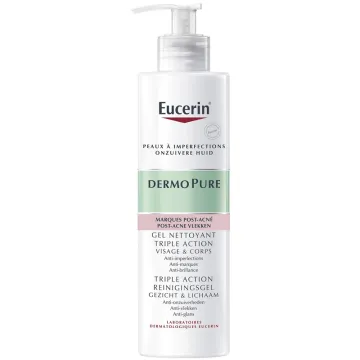
Skin lesions that leave a more or less visible scar after healing are unfortunately unavoidable throughout life. Effective wound treatment, infection-free healing and individual genetic predisposition are decisive factors in minimizing the marks left by injury.
A scar can take up to two years to form, known as the maturation period. During this period, you can have a positive impact on the appearance of the scar. The earlier you start, the better the results. Carefully treated scars are generally much softer, lighter and less protuberant.
Externalscars normally form after injury to the deeper layers of the skin. A small cut or slight laceration often only injures the upper skin layer, the epidermis. It is in this context that a new, intact skin layer is formed from the lower epidermal layer, and closes the wound.
This is not the case when the lesion reaches the dermis , the intermediate skin layer: in this case, it leaves scar tissue made up of inelastic collagen fibers. When it comes to scarring, protection takes precedence over aesthetics, because when the skin is damaged, pathogens can easily penetrate the body. So it's hardly surprising that the body's defences try to close the wound as quickly as possible. As a result, irregular scarring is not uncommon. The formation of a scar is the final, visible stage in the healing process.
Most of the time, a fresh scar is red and protruding. Over time, the scar tissue fades and sags slightly. The affected area remains pale and hairless, with a generally smooth appearance. This skin substitute is less elastic and continues to evolve for around two years. This can later lead to hardening and adhesions. The scar remodeling process can cause typical disorders such as
On the other hand, depending on their extent and location, scars can cause aesthetic discomfort. It is not always possible to cover them with clothing. In fragile areas such as the face, good scar management is therefore crucial.
To better manage skin lesions and avoid unsightly scars, we need to understand the different phases of scarring:
The vascular response is the body's immediate response to cutaneous aggression. It is accompanied by rapid vasoconstriction, which promotes hemostasis. Blood escaping from the injured vessels to the damaged tissue coagulates to form a crust, temporarily isolating the skin tissue from the environment. As soon as the wound appears, regional vasodilation occurs. Vascular permeability increases, leading to a cascade of inflammatory phenomena associating erythema, edema, pain and local hyperthermia. Fibrin deposits and clots rapidly cover the wound bed, for the purpose of hemostasis. This phase culminates in the formation of the red thrombus: the clot.
The inflammatory phase begins rapidly and lasts around 3 days, with neutrophils appearing as early as the 1st hour of healing. This phase is essential to combat surrounding bacteria and create an environment conducive to healing. The main aim of inflammation is to bring polynuclear cells (microphages) to the injured area, followed by macrophages (phagocytosis) and plasma proteins which can:
During this inflammatory phase, leukocytes infiltrate the site, eliminate waste products (clots and injured cells), and release growth factors and pro-inflammatory cytokines that trigger the proliferation phase.
After a few days, neutrophil infiltration ceases, giving way to macrophages, which remain predominant for the rest of the inflammation.
The second stage consists in rebuilding the tissue and blood vessels. The process of growing new blood vessels from pre-existing ones is known as angiogenesis. This phase begins 2-3 days after detersion. Reconstruction of the dermis begins 3 to 4 days after injury. This is called granulation tissue, because of its granular appearance. These granules correspond to the multiple blood vessels that make it up. The formation of granulation tissue involves the concerted migration of macrophages, fibroblasts and blood vessels within the wound. The wound is red, shiny, moderately exudative and appears "fleshy".
Epidermalization (or epithelialization) is centripetal, moving from the outside inwards. By keratinocyte proliferation and confluence, it begins both by multiplication from the margins and by migration within the budding tissue. Certain factors, such as the regularity of the wound surface, are decisive in the colonization of keratinocytes by contiguity. This leads to the formation of a definitive basal membrane, with proliferation in thickness to restore a normal epidermis. This process takes up to 21 days (average wound closure time). The wound is often pinkish in color, not very exudative and superficial.
When epidermalization is complete, we speak of scar tissue. Between days 25 and 30, the collagen in the primary scar breaks down and the scar remodels, becoming softer, smoother and softer to the touch. This remodeling leads to the formation of the scar, which will be definitive after 6 to 12 months. It should be noted that the new tissue remains fragile (tensile strength will be no more than 70-80% of what it was before the wound appeared) and highly sensitive to ultraviolet rays, which is why a total sunblock must be applied to the scar for at least 2 years.
Facial scar care: find our new range of pharmaceutical products to effectively treat facial scars in your online organic pharmacy.
Soin-et-Nature offers a wide range of dermocosmetic products tailored to the specific needs of every skin type. Here are the categories available:
These dermocosmetic products available on Soin-et-Nature enable you to care for your skin while respecting its specific characteristics, thanks to effective, natural and adapted solutions.